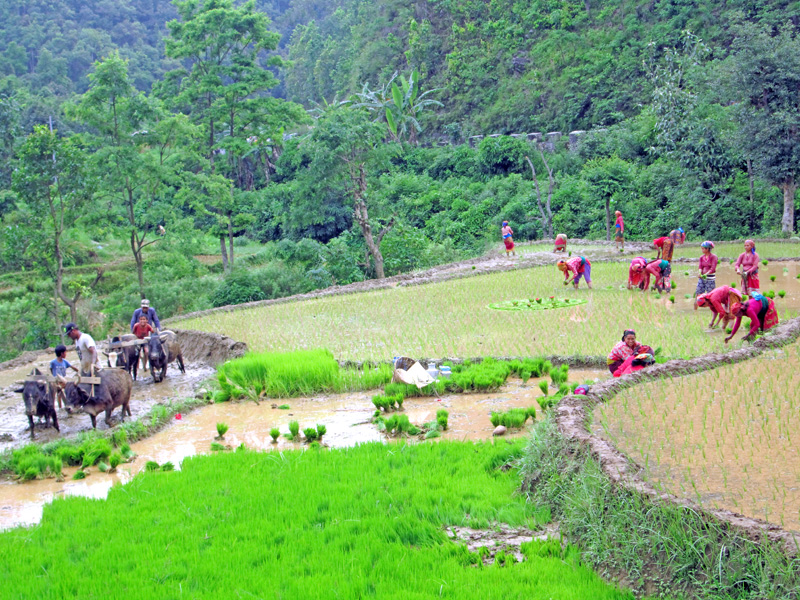20% drop in paddy plantation due to insufficient rainfall

Kathmandu / July 22: This year, rice plantation in the country has experienced a significant decline of 20 percent compared to the previous year, according to a report prepared by the Department of Agriculture under the Ministry of Agriculture and Livestock.
By the third week of July, only approximately 68 percent of the intended rice planting had been completed across the nation, covering an area of 927,233 hectares. During the review period last year, 88 percent of planting had been accomplished.
The ministry expecting rice plantations in an area of about 1.53 million hectares this year. However, late arrival of monsoon in Madhesh, Bagmati, and Gandaki provinces have adversely affected paddy plantation. Regions awaiting rainfall for the planting process have experienced delays, leading to reduced progress in those areas.
Furthermore, Karnali Province has witnessed the outbreak of lumpy skin disease in cattle, which has caused additional challenges for farmers. The lack of healthy plowing bulls for tilling their farmlands has hindered planting activities in the affected region.
Fortunately, Sudur Paschim Province has nearly completed its planting, indicating some progress in rice cultivation despite the challenges faced elsewhere.
With the monsoon season ongoing, authorities are taking measures to ensure the availability of chemical fertilizers, which are vital for crop growth. Moreover, efforts to control the lumpy skin disease outbreak are underway, aiming to mitigate its impact on agricultural activities. As a result, the ministry remains hopeful that by mid-August, approximately 90 to 95 percent of the rice planting will be completed, provided favorable conditions continue.
Province-wise Rice Planting Data
According to the ministry’s data, the highest rice planting activity has been observed in Sudur Paschim Province, where 168,000 hectares of land have been cultivated. This accounts for an impressive 98 percent of planting.
In Karnali Province, paddy has been planted in approximately 76 percent of the intended 29,433 hectares. Similarly, in Lumbini Province, plantation has been completed in 74 percent of the targeted 222,290 hectares of land.
In the Koshi Province, rice planting progress has reached 73 percent of the 200,000 hectares designated for cultivation. Meanwhile, in Gandaki Province, 67 percent of the intended 70,000 hectares have witnessed plantation, followed by 65 percent of the 73,000 hectares in Bagmati Province. In Madhesh Province, plantation in 46 percent of the 163,000 hectares intended for rice planting has been completed. In total, across these provinces, 68 percent of the designated rice planting area has been accomplished.
In comparison to the same period last year, the planting percentages were as follows: Sudur Paschim Province had achieved 97 percent of its target, Karnali Province had accomplished 94 percent, Lumbini Province had observed planting in 92 percent of the intended land, Bagmati Province had achieved 90 percent, Gandaki Province and Madhesh Province had both reached 88 percent, and Koshi Province had completed 80 percent of its planting.
These statistics reveal a decline in rice plantation in most of the provinces this year compared to the previous year. This situation could be attributed to various factors, such as delays in arrival of monsoon, disease outbreaks, and other agricultural challenges.
